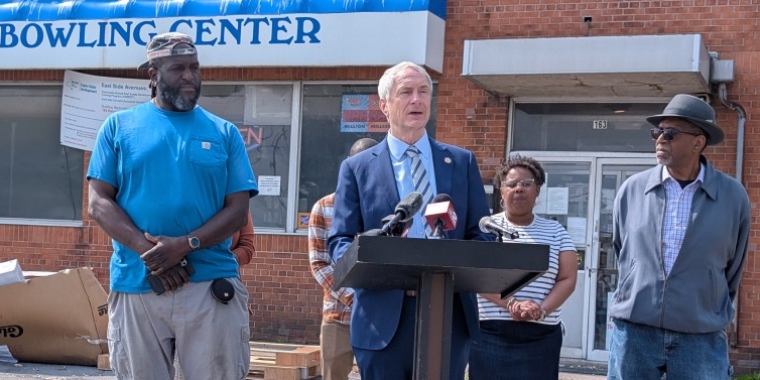
The Editorial Board: Ryan's plan for more affordable homes and help for renters makes sense (The Buffalo News)

Housing is an urgent need in New York. Some might say it is at crisis point. As part of the 2023 state budget, Gov. Kathy Hochul proposed an ambitious plan that would have brought 800,000 new units online, but the package, which included mandatory overrides of zoning laws if housing quotas were not reached, was rejected by the Legislature. The quotas and mandates were a bit hard to swallow for many of Hochul’s fellow Democrats, especially those with suburban constituencies.
As the state begins another year with no comprehensive housing initiative in place – or likely to be – regional solutions make sense. State Sen. Sean Ryan has a four-part housing plan for Western New York that’s well worth considering.
It will take a combination of legislative and budgetary action to implement Ryan’s ideas; both are strongly encouraged.
Ryan’s thoughtful four-component strategy is crafted with Buffalo in mind; it’s not focused, as so much of New York’s housing policy is, on downstate models that tend to call for large, multi-unit developments. It pursues infill housing throughout neighborhoods studded with vacant lots, includes eviction prevention, helps landlords fix up their apartments and directs resources toward energy efficiency – bringing down costs and forwarding New York’s climate goals.
Human-scaled housing
Many people don’t want to live in high-rises or even three- or four-story-high blocks of apartments. They like single or double-unit houses and these can be unaffordable for both buyers and renters. In Western New York, affordable starter homes are a species headed for extinction. Ryan’s plan suggests directing New York State Housing and Community Renewal funds toward single and double infill housing to fill in some of the 13,000 vacant lots throughout Buffalo. The program would build 2,000 homes in five years, market them to low- and moderate-income buyers and generate as much as $12 million in property tax per year. Unlike many big mixed-use projects that include apartments, these homes would not be tax-exempt.
Forestalling homelessness
With 90% of evictions arising from the inability to pay rent, Ryan has a solution that would keep families in their apartments, and it’s money that is meant for this purpose. The state’s Temporary Assistance for Needy Families (TANF) fund already has $1.3 billion in surplus that can be used for eviction prevention; it’s a much better use of government funds than paying for the newly homeless to stay in hotels.
Upgrading rental properties
Ryan notes that many rental units remain empty because they fall short of the standards required for subsidized housing. He’d get these units back online by providing grants to landlords, who would, in turn, be required to keep the units affordable. This could help upgrade as many as 1,500 Buffalo units.
Reducing energy costs
Utility companies National Fuel, National Grid and Noco are open to helping with the fourth pillar of this housing plan, according to Ryan. It would improve insulation at no cost to owners and could even expand to more ambitious green energy upgrades.
Ryan is correct in asserting that the market will not solve Buffalo’s housing problem. The market has gotten us to where we are: unaffordable homes and high rents – a situation that punishes low-income families.
Hochul hasn’t given up on her aspirations for building New York’s affordable housing stock. Through executive actions, she plans to give $650 million to certified Pro-Housing Communities; in Western New York that would mean localities that can prove their housing supply has increased by 0.33% over the past year or by 1% over the past three years. Hochul also is proceeding with an initiative to build housing on state property.
It’s called pivoting. And it’s encouraging.
Both Hochul and Ryan understand that even without a statewide grand bargain, strong, decisive action on housing can’t wait another year.
